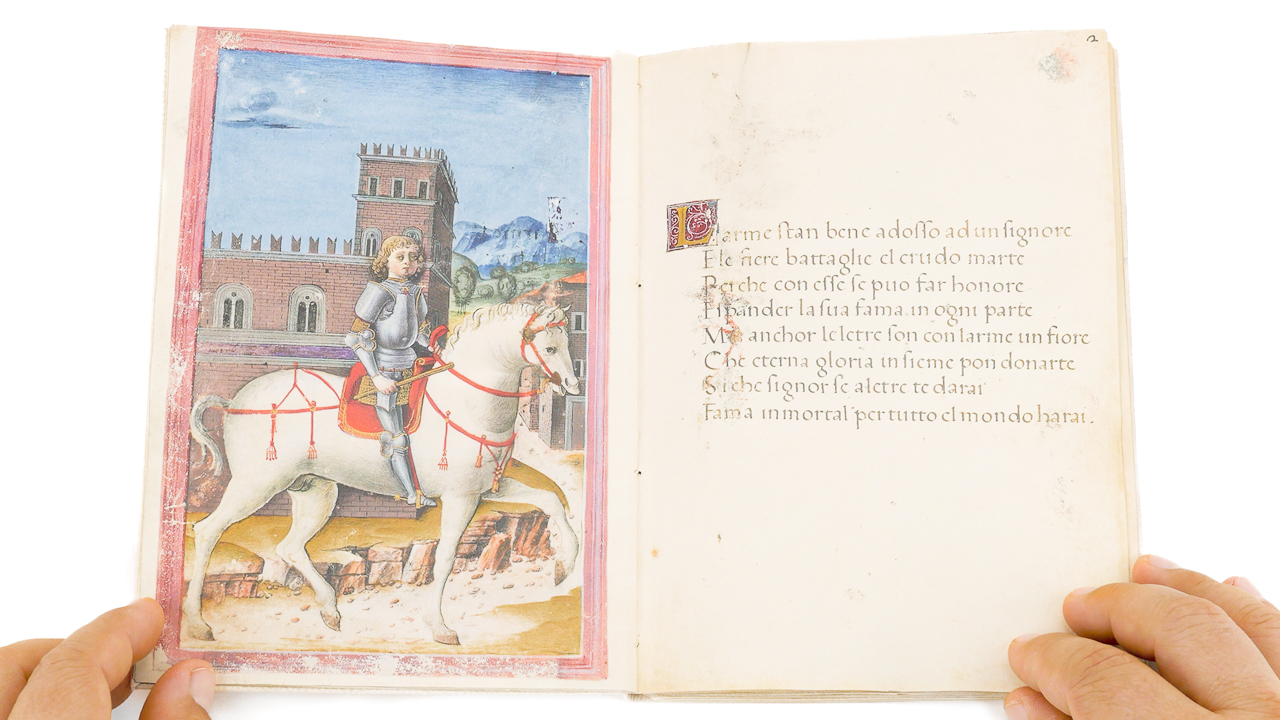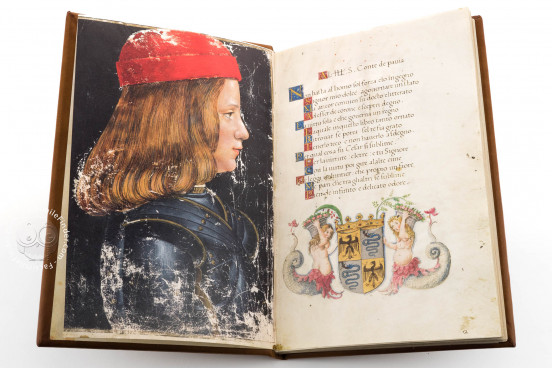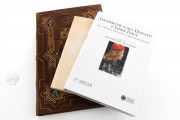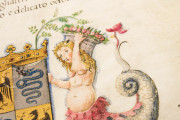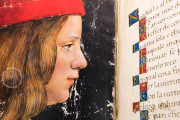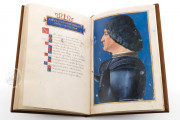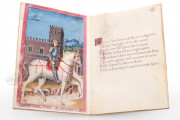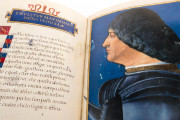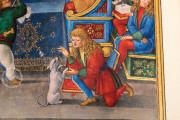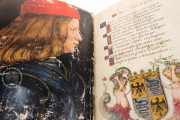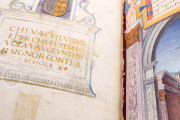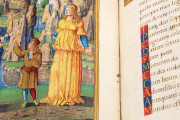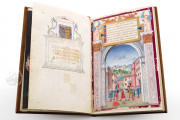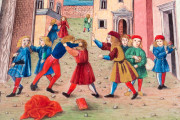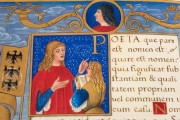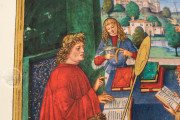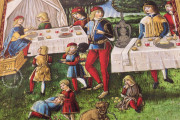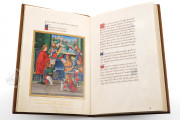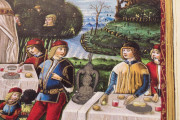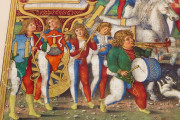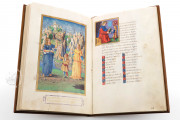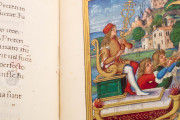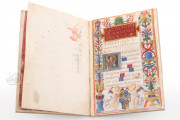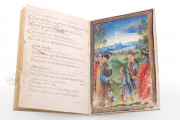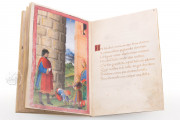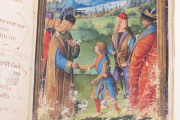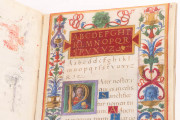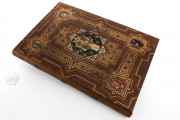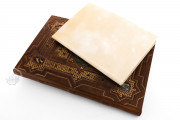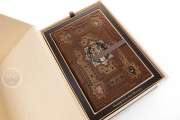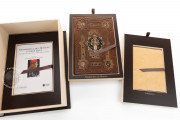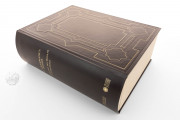The Liber Iesus and Treatise on Grammar are a pair of lavishly illuminated manuscripts ostensibly created for the practical and spiritual education of Massimiliano Sforza. Work began at his birth in 1493, and the books were completed while the boy was still a toddler. Giovanni Battista Lorenzi wrote both manuscripts in Milan at the behest of Massimiliano's father, Ludovico Sforza, Duke of Milan. Five illuminators contributed to their sumptuous appearance, the most famous being Giovanni Ambrogio de Predis and Giovan Pietro Birago. The eleven large miniatures provide forceful instruction about leadership.
The manuscripts include alphabets, Christian prayers, and a grammatical treatise called "The Door" (Ianua)—understood at the time to have been the work of Aelius Donatus (fourth century CE)—presented with Cato's distichs, a collection of moralizing couplets often employed in teaching Latin.
Portraits of the Prince
Massimiliano, as pictured in the miniatures, models princely behaviors. In the grammar (Triv. 2167), he is shown mounted on a horse, attending his lessons, taking a meal in a garden, in a triumphal procession, and choosing between Virtue and Vice (fols. 10v, 13v, 26r, 29r, and 42v).
The Liber Iesus ("Jesus Book," a primer, or "first book") opens with a portrait of the boy in armor mounted on a white steed (Triv. 2163, fol. 1v) facing an Italian-language poem in ottava rima that extols the fame that can be gained from military action.
Important Associations
A miniature in the Liber Iesus depicts Massimiliano in the company of the Holy Roman emperor (Triv. 2163, fol. 6r). In the foreground of a deep landscape, the boy is shown shaking the hand of Maximilian I (1459-1519). Their imaged conversation in German appears on the opposite page, with an Italian version supplied in smaller script.
A Collaboration among Master Illuminators
The manuscripts were never intended for practical use; their raison-d'être was the miniatures, which aggrandize Ludovico and Massimiliano. Although scholars do not agree on all attributions, there is no doubt that five talented painters, perhaps with assistants, illuminated the volumes, and some miniatures betray the influence of Leonardo da Vinci.
Giovanni Battista Lorenzi, Court Scribe
The manuscripts' scribe, Giovanni Battista Lorenzi, became Massimiliano's secretary and copied many classical Roman texts for him. In the young prince's manuscripts, he employed a Humanistic Minuscule script that imitates print in its spacing and strict regularity. The text is articulated by historiated initials, with minor divisions marked by smaller gold initials on colored grounds.
Treasures of Carlo Trivulzio's Library
The Liber Iesus and then some years later the grammar were acquired in the last quarter of the eighteenth century by Carlo Trivulzio (1715-1789). The manuscripts remained in the Trivulzio family until the municipality of Milan acquired the family's art collections and a portion of the library in 1935. By then, the grammar had lost a leaf, the opening leaf of the text proper of Ianua (Triv. 2167, fol. 4), whose appearance was recorded in photographs taken in 1913.
We have 1 facsimile edition of the manuscript "Liber Iesus and Treatise on Grammar": Grammatica del Donato e Liber Iesus facsimile edition, published by Franco Cosimo Panini Editore, 2016
Request Info / Price
